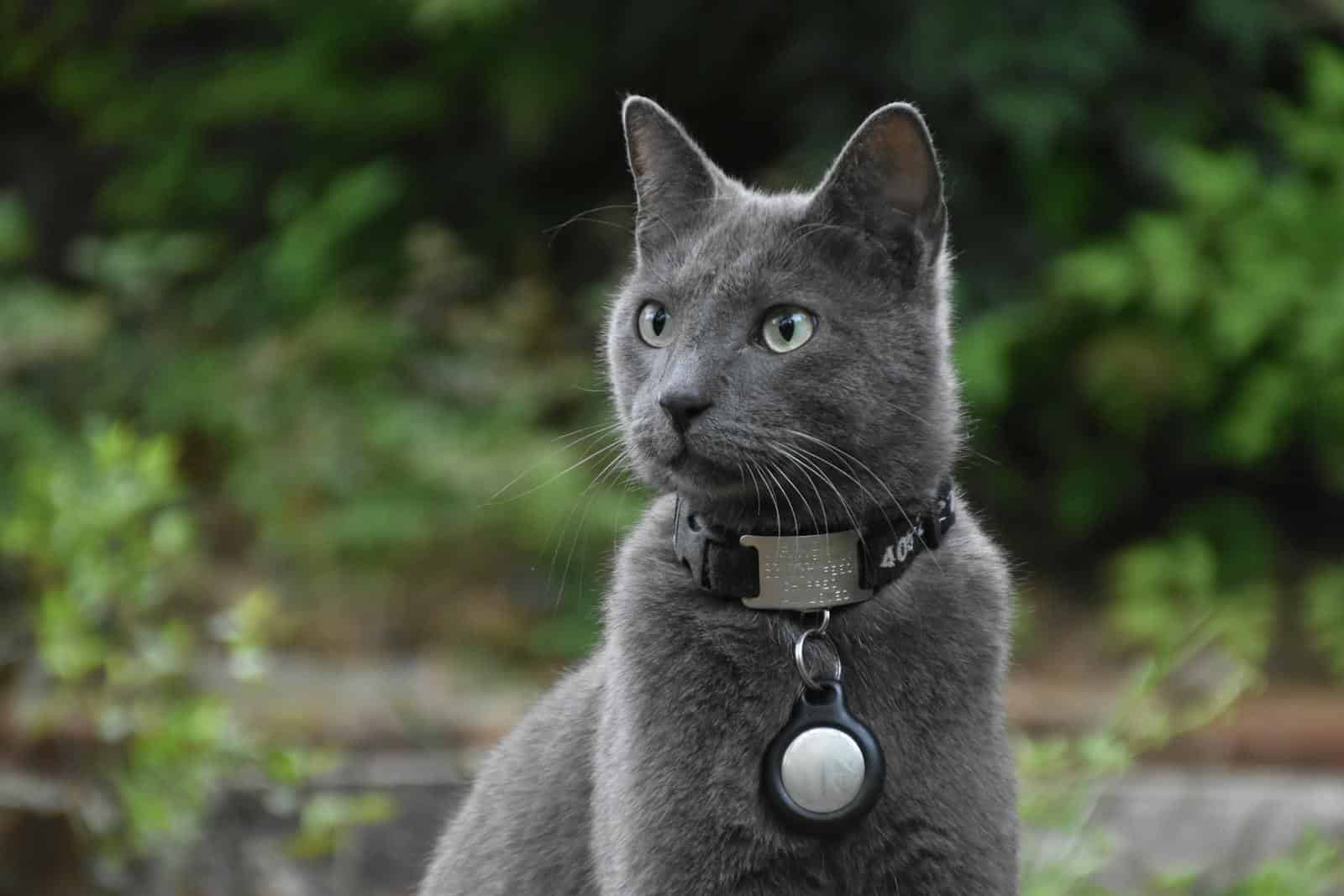Yes, even though they aren’t necessarily designed for it, Airtags can (and are) used to track pets like dogs and cats. AirTags utilize Apple’s Find My network to track the location of everyday items, and this technology can extend to keeping tabs on pets as well. Although AirTags are not specifically designed for animals, some cat and dog owners are adapting them to monitor their furry companions. The process is simple – owners can attach the device to their pet’s collar and then see their pet’s location within feet, as long as they are within range of Apple’s network.
However, some concerns have been raised regarding the use of AirTags for animal tracking. Since they were initially designed for inanimate objects, the manufacturer has not explicitly endorsed their use on pets. Additionally, dogs chewing or ingesting the devices could lead to potential health risks. Despite these concerns, various third-party accessories are available that aim to facilitate the attachment of AirTags to pet collars in a safer manner.
Apple AirTags for Pets: What You Need to Know
Apple AirTags are small, affordable Bluetooth trackers designed for finding lost keys, bags, or other items. But what about your furry friends? Could an AirTag help you find your missing pet?
How AirTags Work
AirTags don’t have built-in GPS. They rely on Apple’s vast network of iPhones and other devices to detect their Bluetooth signal and relay their location back to you through the “Find My” app.

Can You Use Them for Pets?
Technically, yes. But Apple doesn’t officially recommend it. AirTags were made for items that stay put, not for moving creatures. Your pet’s constant motion might make it harder to get accurate location updates.
Pros and Cons of Using AirTags for Pets
| Pros | Cons |
|---|---|
| Affordable compared to GPS pet trackers | Requires other nearby iPhones for precise tracking |
| Small and lightweight | Might not update location frequently enough for fast-moving pets |
| Water-resistant | Bluetooth range can be limited |
| Easy to set up and use | Not designed to withstand chewing or rough play |
Alternatives to AirTags
- GPS Pet Trackers: These offer real-time location tracking and often come with extra features like activity monitoring and virtual fences.
- Bluetooth Pet Trackers: Similar to AirTags but specifically designed for pets, with more durable attachments and sometimes longer battery life.
Tips for Using AirTags with Pets
- Secure Attachment: Get a collar attachment specifically designed for AirTags to prevent it from falling off or getting lost.
- Battery Life: AirTag batteries typically last about a year, so remember to replace them regularly.
- Limited Range: Understand that AirTags work best in populated areas with lots of Apple devices around.
- Not a Substitute for Microchipping: Always microchip your pet as a permanent form of identification.
Key Takeaways
- AirTags can track the location of pets when fitted to their collars.
- The devices are primarily intended for items, not live animals.
- Third-party accessories exist to help attach AirTags safely to pets.
Understanding AirTag Technology
AirTag technology provides a simple solution for tracking items, and dog owners often use it to keep tabs on their pets.
How AirTags Work
AirTags use Apple’s Find My network. This is a vast system that taps into millions of Apple devices. When an AirTag is nearby any of these devices, it sends out a Bluetooth signal. The Find My network uses these signals to locate the missing item. Satellites or GPS satellites have no direct role in this process. AirTags do not use cell service or cellular connections either. Hence, in areas without a dense network of Apple devices, like remote trails, their effectiveness drops.
AirTag location can be seen on the Find My app. This is available on devices running Apple’s iOS. For Android users or those without the Find My app, location tracking is not readily accessible.
AirTag Design and Specifications
AirTag specifications include a small, round design that fits into various accessories. One AirTag has the following features:
- A replaceable battery with a life of about a year
- Bluetooth for proximity finding
- Apple-designed U1 chip for Ultra Wideband and precision finding
- NFC tap for Lost Mode
The design ensures the AirTag is sealed against water and dust, making it durable even when used on a pet’s collar. However, as a tracking device intended for items, not pets, users must recognize that tracking efficiency largely depends on the surrounding environment’s network density.
AirTag Usage for Cat / Dog Tracking
AirTags offer an innovative way to keep tabs on items, and pet owners have adapted this technology to monitor their pets. This section explains how to attach an AirTag to your animal’s collar, its benefits and drawbacks, and important safety tips.
Setting Up an AirTag on Your Pet’s Collar
To attach an AirTag to your cat or dog’s collar, you’ll need a secure tag holder that hangs safely from the collar. First, place the AirTag into the holder. It should fit snugly to prevent it from falling out during their activities. Then, securely fasten it to the collar, ensuring it doesn’t dangle excessively, which might tempt your dog to chew on it. Once attached, pair the AirTag with your iPhone using the Find My app. Proceed by following the in-app instructions to give the AirTag a name that corresponds to your pet.
The Advantages and Limitations of Using AirTags for Pets
Advantages:
- Affordable: With a low starting price, an AirTag is a cost-effective option compared to specialized pet trackers.
- Easy to Set Up: Owners can set it up in minutes with an iPhone.
- No Subscription: Unlike some GPS trackers, AirTags require no ongoing costs.
Limitations:
- Bluetooth Range Limited: Tracking is reliable only within Bluetooth range and depends on nearby devices in the Apple network.
- No Real-time GPS: AirTags lack real-time GPS, so tracking your pet in real-time, especially in rural areas, is not feasible.
- Safety Concerns: There’s a risk of ingestion or choking if the AirTag is not secured properly.
Safety and Maintenance of AirTags for Pets
For safety, regularly check the AirTag holder’s condition on your cat or dog’s collar to ensure it’s intact and secure. AirTags are water-resistant, not waterproof, so remove them before your dog swims. Consult a vet immediately if the AirTag is chewed or ingested. To keep the AirTag clean, wipe it with a soft, dry cloth. Do not expose it to harsh chemicals or extreme temperatures. Additionally, watch for any notifications of suspicious movements which could indicate your dog or cat is somewhere unexpected due to the AirTag’s anti-stalking features.







